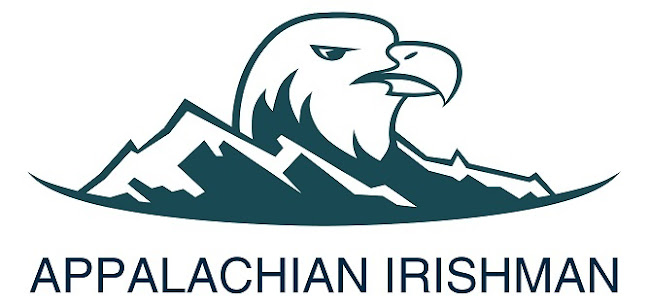Introduction
Is the new name for Clingman's Dome, in the Great Smoky Mountains National Park, spelled with an “o” or an “a”? How is Kuwohi or Kuwahi pronounced? This thirty-forth entry in the Appalachia - Upper East Tennessee topic section wants to know! The conclusion has the answer and shares how the new name is pronounced.
Foremost, it was named Clingman's Dome, not Clingmans Dome. The apostrophe was required to show the possessive case. This website's article from 7/14/2022 explains that the location had been named after Thomas Clingman, and it tells who he was.
Kuwohi: the Official Spelling
The official name change from Clingman's Dome to Kuwohi was on Wednesday, September 18. A local television news station informed us. One online source (with my grammatical corrections added in brackets) is “Clingman[']s Dome name change proposal approved[;] Kuwohi name restored to Smokies mountain[.]” WATE, by Hannah Moore and Melanie Vásquez Russell, 9/18/2024. The article includes the following (with my bracketed corrections added):
On September 18, the U.S. Board of Geographic Names voted in favor of the request submitted by the Eastern Band of Cherokee Indians (EBCI) to change the name of Clingman[']s Dome to Kuwohi.
Kuwohi means “mulberry place[,]” and the National Park Service shared [that] the Cherokee syllabary for the name is ᎫᏬᎯ. Kuwohi holds a significant meaning to the EBCI, whose leaders today say the place of mulberries is a sacred summit that also served as a refuge for past Cherokee people avoiding forced relocation to Oklahoma, or the Trail of Tears.
Kuwohi is the highest point in Tennessee[,] and the observation tower offers visitors to the summit 360° views of the Smokies. It was renamed after Confederate General Thomas Clingman, who was said to be the first person to accurately measure the peak’s elevation.
The following federal website article confirms Kuwohi as the officially correct spelling: “Kuwohi name restored to the highest peak in the Smokies: U.S. Board of Geographic Names approves Eastern Band of Cherokee Indians name change request,” National Park Service: Great Smoky Mountains National Park, by Katie Liming, 9/18/2024. The first paragraph includes the following (with my bracketed correction for Clingman's added):
The U.S. Board of Geographic Names voted today in favor of the formal request submitted by the Eastern Band of Cherokee Indians (EBCI) to change the name of Clingman[']s Dome (FID #1326387) to Kuwohi (pronounced koo-WHOA-hee). Kuwohi is the Cherokee name for the mountain and translates to “mulberry place.” In Cherokee syllabary, the name is ᎫᏬᎯ.
Other recent online news sources that I saw also spelled the new name for Clingman's Dome as Kuwohi. As an aside, most of those sources misspelled Clingman's without the apostrophe.
Kuwahi: an Alternate Spelling
Two years ago, online articles indicated that Clingman's Dome was to be renamed Kuwahi, with an “a,” not an “o.” For example, my 7/14/2022 article (The Solid Rock: Clingman's Dome, Kuwahi, or Christ?) cites a 7/8/2022 local news article, which mentioned that Kuwahi would be the new name.
Several other articles from 2022 indicate the proposed name change to Kuwahi. For example, with my bracketed corrections added, see “Clingman[']s Dome name change to be discussed by Cherokee Tribal Council,” WATE, by Melanie Vásquez Russell, 7/8/2022. The first paragraph states (including my bracketed correction):
The Eastern Band of Cherokee Indians Tribal Council is slated to discuss a resolution that, if passed, will begin the tribe’s process of petitioning the federal government to restore the name, “Kuwahi” to the mountain currently known as Clingman[']s Dome in the Great Smoky Mountains National Park.
Conclusion
In 2022, the spelling Kuwahi was preferred. Earlier this month, Kuwohi became the officially correct spelling.
Research indicates that the new name may be spelled either way. I found Siyo Cherokee Language Engine: Cingingman’s Dome, Mulberry Place. (“Cingingman's” is probably a typographical error for “Clingman's.”) The website states that the eastern Cherokee dialect syllabary is “ᎫᏩᎯ” for “Kuwahi,” which means “mulberry place” in English. Further, Siyo Cherokee Language Engine: Mulberry shows “guwa” or “kuwa,” both ending in an “a,” to be the Cherokee word for mulberry. Museum of the Cherokee People: Photo Record: Object ID: NMAI - P15137, however, describes the postcard image as a view of “Clingman's Dome (Kuwahi or Kuwohi; 'mulberry place').”
How is Kuwohi pronounced? It seems to have two options. In the first option, the accent is on the final vowel (the “i”). The second vowel (the “o”) is a soft “a” sound, as in “wash.” I found two online examples. First, please listen to “How To Pronounce Kuwahi,” How To Say (YouTube), 7/13/2022. As an aside, it must be correct, since they pronounce “Appalachian” correctly: “How To Pronounce Appalachian,” How To Say (YouTube), 6/23/2020! A direct Cherokee source is Cherokee Nation: Language Department: Word List. Searching for “mulberry place” finds nothing. A search by “mulberry,” however, finds the phonetic “gu-wa,” the Cherokee “ᎫᏩ,” and the sound recording. The phonetic first syllable “gu” is pronounced like the letter “k.”
The second option places the accent on the “o,” making a strong “o” sound as in “whoa,” such as when you tell a horse, “Whoa!” The following video from late 2022 records Lavita Hill, a Cherokee, pronouncing the word: “The importance of Kuwohi to the Cherokee,” Knoxville News Sentinel (YouTube), 11/9/2022.
Either way, this Appalachian Irishman is pleased to call the former Clingman's Dome Kuwohi. As my 7/14/2022 article suggested, Knox County, Tennessee, needs to be renamed. The article confirms that Knoxville and Knox County were named after Henry Knox. In his role as Secretary of War under President Washington, Knox oversaw a government policy to remove native people, including the Creek and Cherokee, from their ancestral lands.






No comments:
Post a Comment